#Brochure Campaign Sale
Explore tagged Tumblr posts
Text
Campaign 13 Avon Brochure Online Avon C/13-2023 Sale Dates Campaign Catalogs, Sales & Specials for Campaign 13-2023 are effective June 21, 2021 to July 4, 2023 – view/shop the current campaign here: Avon Campaign Brochure For anyone that doesn’t know what a “campaign” is in the world of Avon… a campaign is a 2 week period of time that a brochure, sales and specials are good for. That’s…

View On WordPress
#Avon c13#Avon c13 brochure online#Avon campaign 13#Avon campaign 13 online sale dates#Avon haiku sunrise#new haiku sunrise perfume
0 notes
Text
When it is asserted in Germany that in vitro fertilization and similar technologies are all about helping infertile women, German feminists impatiently brush that claim aside. They are irritated at any suggestion that they ought to take such a claim seriously. It is, they say, a "Deckmantel," which means "cloak," "disguise." In conversations with them, one hears occasional references to the political naivete of Americans who accept such a "Deckmantel" at face value.
German feminists have known all along that the stakes in this issue are high. They are particularly sensitive to the ways in which these technologies can and are beginning to be used to manufacture human beings to specifications and, in the process, to reduce women to breeders or, less elegantly, to raw material for a new manufacturing process.
Unlike U.S. feminists, they organized as a movement on the issue and began spreading their critique beyond the feminist movement.
That the stakes are indeed high became dramatically evident in December 1987.
The German equivalent of the FBI (the 'Bundeskriminalamt") staged thirty-three simultaneous raids, many of them against feminists, throughout the Federal Republic of Germany, December 18 at 4:30 p.m. A total of 430 heavily armed police burst into the workplaces of activists. Fifteen to thirty in a group, the police swept into homes in Cologne, Dortmund, and Düsseldorf. In Essen, Duisburg, Bochum, and Hamburg, the raids were directed overwhelmingly against feminist critics of genetic and reproductive technology, according to Prozessgruppe Hamburg, a watchdog group.
The targeted critics have written and spoken on such issues as in vitro fertilization, amniocentesis, sex predetermination, and genetic engineering. They have actively opposed surrogate motherhood. Many worked together in a massive coalition to stop Noel Keane's attempt to open a branch of his U.S. surrogate business, United Family International, in Frankfurt. (Keane's New York firm arranged the Mary Beth Whitehead surrogate contract.) Their campaign to stop the sale of U.S. women to European men for breeding purposes ended successfully January 6, 1988 when a West German court ordered Keane's business closed, three months after it had opened.
Grounds for the police raids? In many cases, the women were not given any. But the next day, newspapers reported that the police conducted the searches to ascertain whether any of the individuals were members of a terrorist organization. They were specifically looking for a group called Revolutionaren Zellen and its feminist wing, Rota Zora.
The police were operating under Paragraph 129a of the terrorist act, "Support or Membership in a Terrorist Organization."
The women raided were forced to undress. All "non-changeable marks" on their bodies—scars, moles, etc. —were noted down in police records. The women were fingerprinted.
Two well-known and widely respected women were arrested: Ulla Penselin, active in two groups in Hamburg, Women Against Genetic Engineering and another group critiquing population control policies; and Ingrid Strobl, a journalist for eight years with the national feminist magazine, Emma. Strobl is accused of buying a clock used in a bombing attack against Lufthansa offices in Cologne to protest the exploitation of Third World women in the sex-tourism industry. Both women were charged under the terrorist act, Paragraph 129a. Strobl remains in prison while Penselin has since been released.
In the nationwide raids, police confiscated materials from an archive on genetic and reproductive technology established by women in Essen and from private homes and apartments. They seized drafts of the women's speeches, material prepared for seminars, names and addresses of those attending seminars, published work, videos, tapes of radio programs, scientific articles, postcards, brochures and private address books.
The police raids appear to be an attempt to stop the widespread antigenetic technology movement in Germany by linking legal organizations with more militant ones, Maria Mies, author of Patriarchy and Accumulation on a World Scale and professor of sociology at the Fachhochschule in Cologne, told me in a telephone interview from her home.
"No concrete accusation or crime was being investigated," she pointed out. "This means that women doing 'Aufklarungsarbeit,' that is, researching reproductive or genetic engineering or talking about it or giving seminars, are already doing enough to provide a pretext for the attorney general to launch such a police action."
Mies, an organizer of the world's first massive feminist conference against reproductive and genetic technology in Bonn in 1985, said of the police action: "We think it is an effort to criminalize and intimidate the whole protest movement of women against reproductive and genetic engineering and frighten others away from participating in order to prevent the movement from spreading even more widely."
Mies added: "We are planning another conference against reproductive and genetic engineering just to demonstrate that we are continuing our work."
-Gena Corea, “The New Reproductive Technologies” in The Sexual Liberals and the Attack on Feminism
#gena corea#reproductive technologies#German feminism#female oppression#womens history#patriarchal state#anti ivf
122 notes
·
View notes
Text
Freelance Digital Marketer in Malappuram | Afeefa
In the fast-paced world of digital marketing, businesses need more than just a presence—they need a strategy that drives results. As a freelance digital marketer in Malappuram, I, Afeefa, understand the unique challenges and opportunities that local businesses face. My goal is to help you navigate the digital landscape with confidence, using tailored strategies that enhance your online presence, engage your audience, and ultimately, grow your business. From SEO to social media marketing, website design, and content creation, I offer comprehensive digital marketing services designed to meet your specific needs.
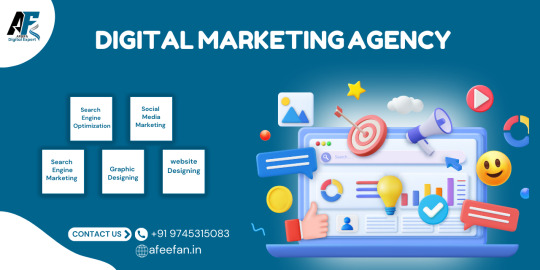
Boost your business online with expert digital marketing strategies that drive results.
Digital Marketing Services Tailored for Your Business
Search Engine Optimization (SEO)
Effective digital marketing strategies are built on SEO. By optimizing your website’s content, structure, and technical elements, I help your business rank higher on search engines like Google. This increased visibility drives more organic traffic to your site, leading to more leads and sales. Whether you’re a local business in Malappuram or looking to expand your reach, my SEO strategies are designed to put you on the map.
Social Media Marketing (SMM)
Social media is where your customers are, and I can help you meet them there. My SMM services include setting up and managing your social media profiles, creating engaging content, and running targeted ad campaigns. Whether it’s Facebook, Instagram, LinkedIn, or any other platform, I tailor my approach to your brand and audience, ensuring that your social media presence is not just active but effective.
Website Design and Development
Your website is often the first point of contact potential customers have with your brand. I specialize in designing and developing websites that are not only visually appealing but also user-friendly and optimized for conversions. From responsive design to intuitive navigation, every aspect of the website is crafted to enhance user experience and encourage interaction.
Graphic Design
Visuals play a crucial role in how your brand is perceived. I offer graphic design services that include everything from logo design to marketing materials like brochures, banners, and social media graphics. My designs are modern, clean, and aligned with your brand’s identity, helping you stand out in a crowded marketplace.
Content Creation
Content is the heart of digital marketing. Whether it’s blog posts, website copy, or social media updates, I create content that resonates with your audience and encourages them to take action. My content creation services are designed to inform, engage, and convert, ensuring that your brand message is always clear and compelling.
Why Choose Afeefa as Your Freelance Digital Marketer
Personalized Attention
As a freelancer, I offer a level of personalized attention that larger agencies can’t match. I work closely with you to understand your business goals and challenges, and I tailor my services to meet your specific needs.
Cost-Effective Solutions
Working with a freelancer like me means you get top-quality digital marketing services without the overhead costs associated with larger firms. I offer flexible pricing options that fit your budget while delivering measurable results.
Proven Results
My approach is data-driven and results-oriented. I track the performance of every campaign, making adjustments as needed to ensure we’re always moving towards your business goals. My clients in Malappuram have seen significant improvements in their online visibility, engagement, and sales thanks to my strategies.
In conclusion, choosing the right digital marketing partner is crucial for the success of your business. As Afeefa, a freelance digital marketer in Malappuram, I bring a blend of creativity, technical expertise, and a deep understanding of the local market to every project. Whether you’re looking to boost your SEO, enhance your social media presence, or create a stunning website, I’m here to help. Let’s collaborate to develop a digital marketing strategy that not only meets your goals but exceeds them. Contact me today to learn more about how my services can help your business thrive in the digital age.
Contact information
+91 9745315083 website:afeefan.in
#digtal marketing#search engine optimization#search engine marketing#google search#website#web development#content marketing#emailmarketing
3 notes
·
View notes
Text
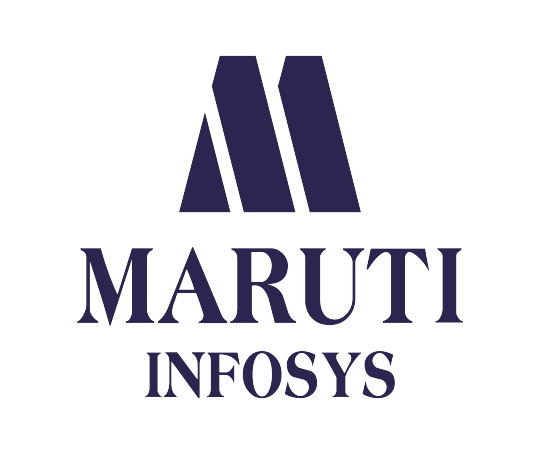
Maruti Infosys—Your Top IT & Digital Marketing Partner
Welcome to Maruti Infosys, your trusted partner in IT and digital marketing. Our experts are dedicated to helping businesses succeed online. We offer a wide range of services to maximize your internet presence:
SEO: Optimizing websites for search engine rankings to boost visibility, traffic, and reputation.
Web Development: Creating beautiful, user-friendly websites, including custom designs and e-commerce solutions.
Social Media Marketing: Leveraging platforms like Facebook, Instagram, Twitter, and LinkedIn to build brand awareness and drive traffic.
Affiliate Marketing: Partnering with influencers to expand reach and boost sales.
Email Marketing: Crafting targeted campaigns to nurture leads and drive conversions.
Online Services: Providing domain registration, hosting, and secure online operations.
ORM: Managing and enhancing your brand's online reputation.
PPC: Delivering immediate results with optimized Google Ads and Bing Ads campaigns.
Graphic Design: Creating engaging logos, brochures, and social media visuals.
Content Writing: Producing high-quality, SEO-friendly content.
Digital Marketing Solutions: Offering end-to-end services for a consistent and effective online presence.
Performance Marketing: Using data-driven strategies to increase conversions and ROI.
At Maruti Infosys, we are committed to excellence, innovation, and customer satisfaction. Partner with us to achieve your digital marketing goals.
Contact Us: Ready to grow your business? Connect with Maruti Infosys today.
#digitalmarketing agency#digital marketing services#seo services#google ads#social media marketing#facebook ads#search engine marketing
2 notes
·
View notes
Text
I can't imagine this taking off on here, but here's the brochure and link for my avon UK store, there's a huge sale on there at the moment
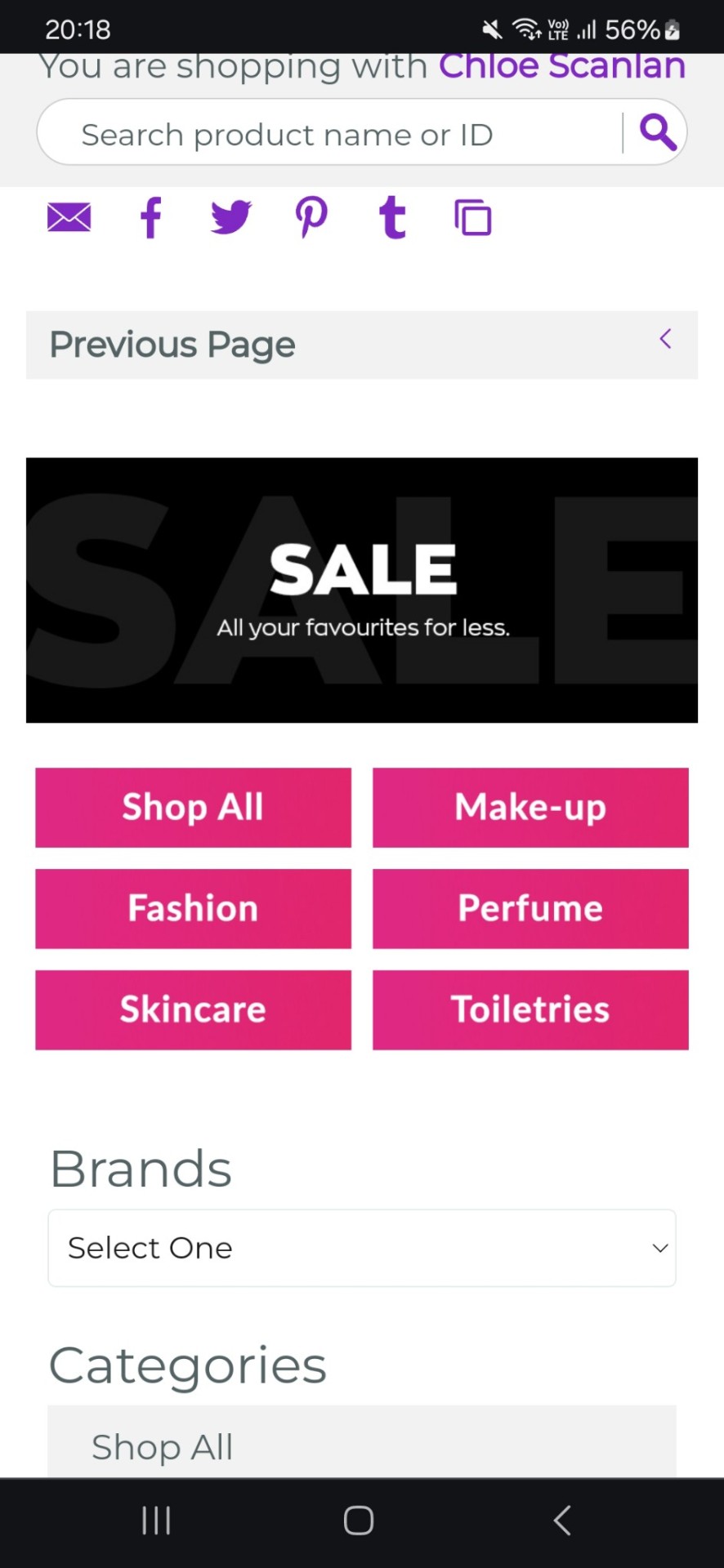
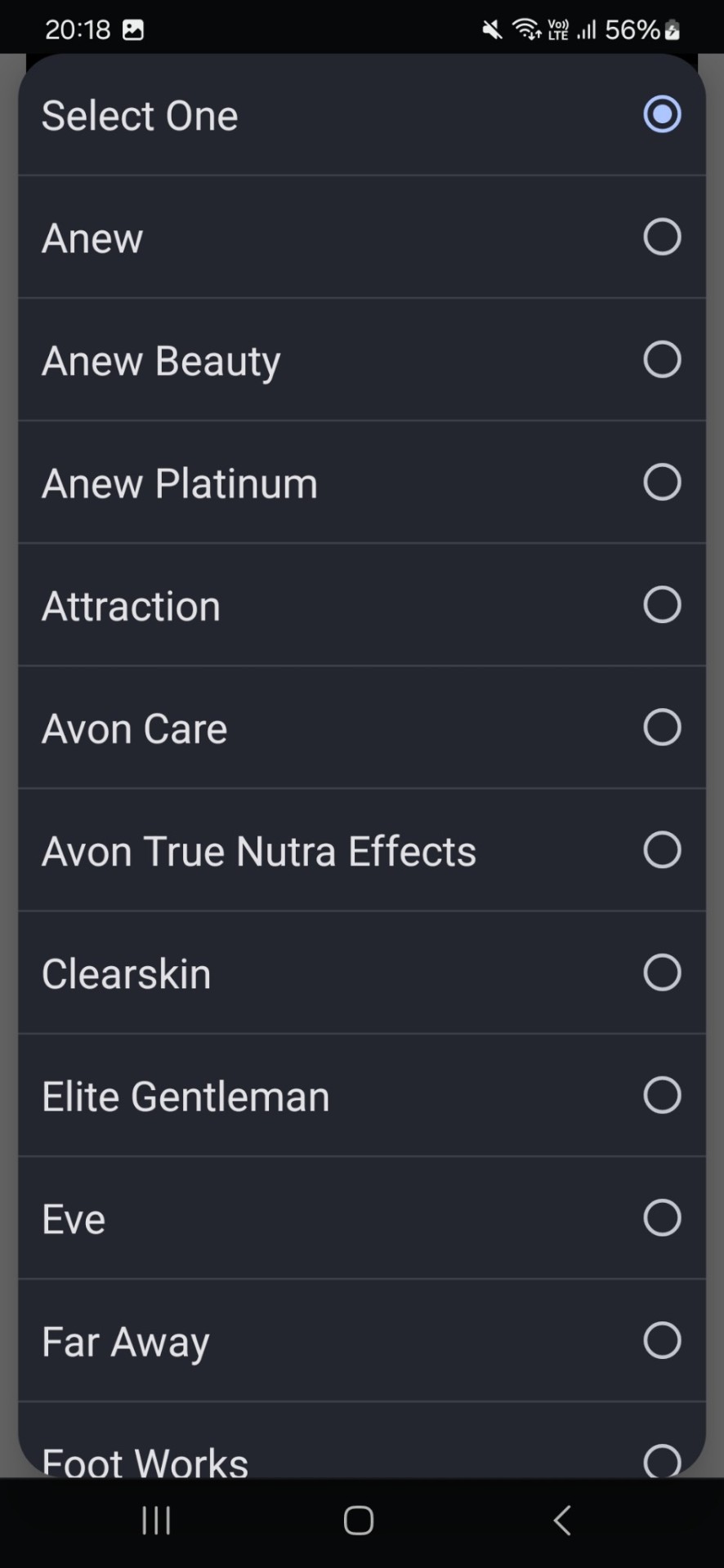
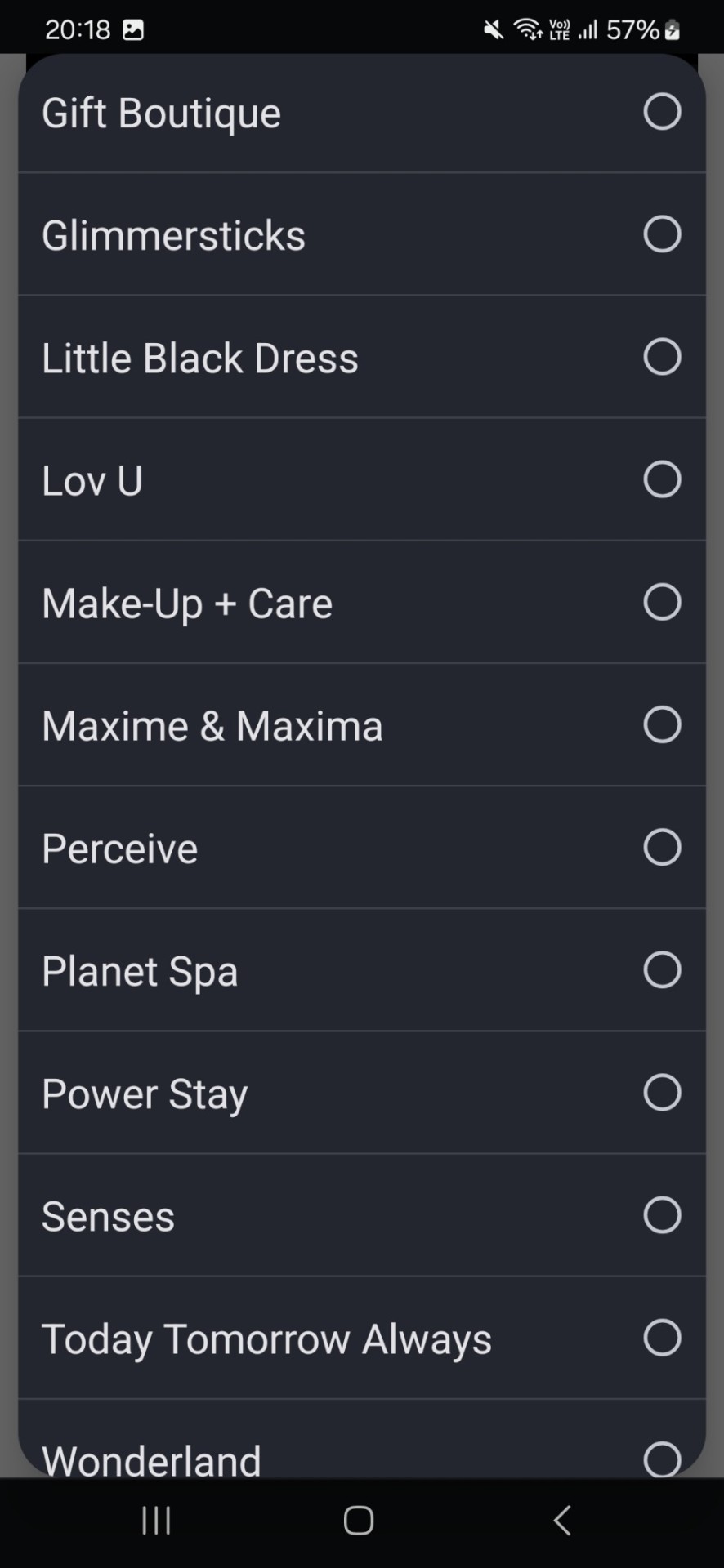
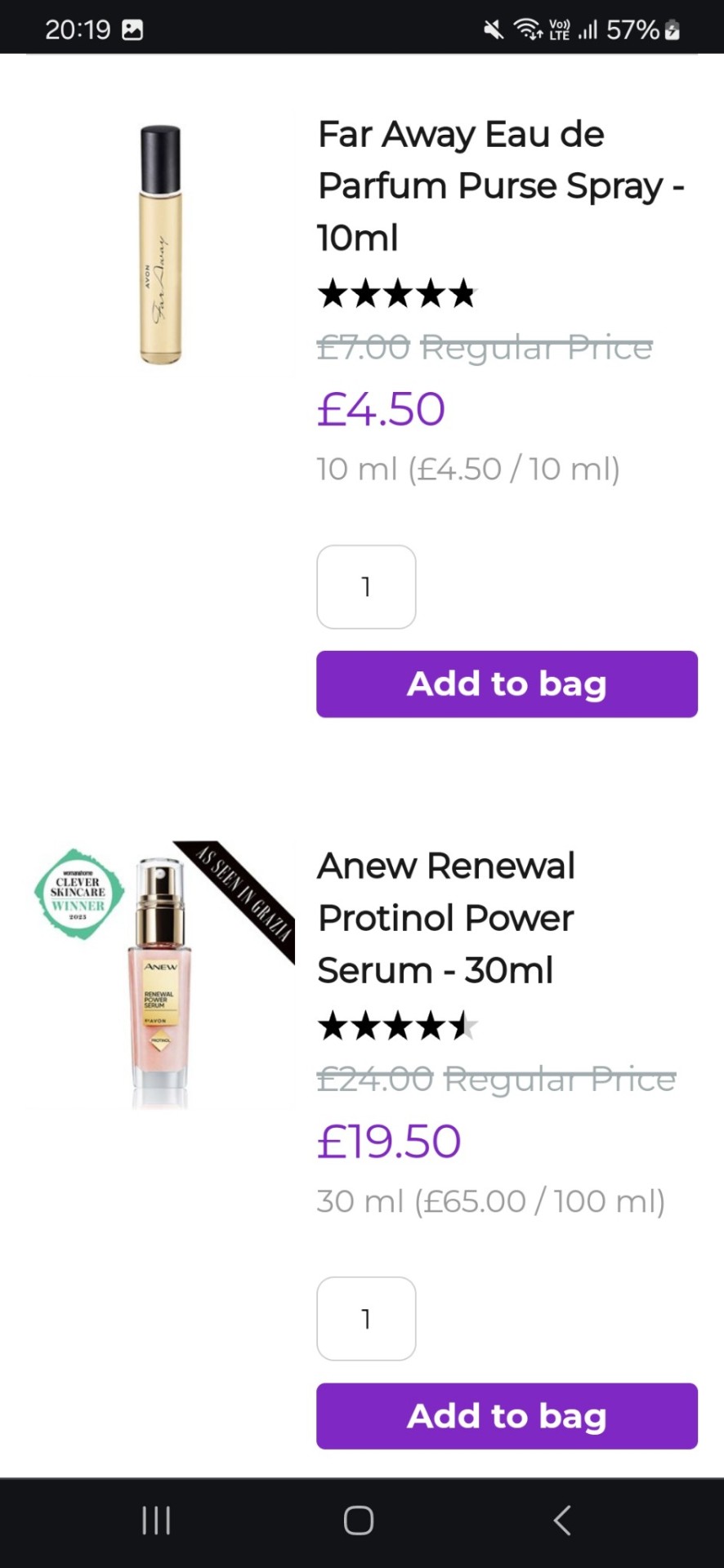
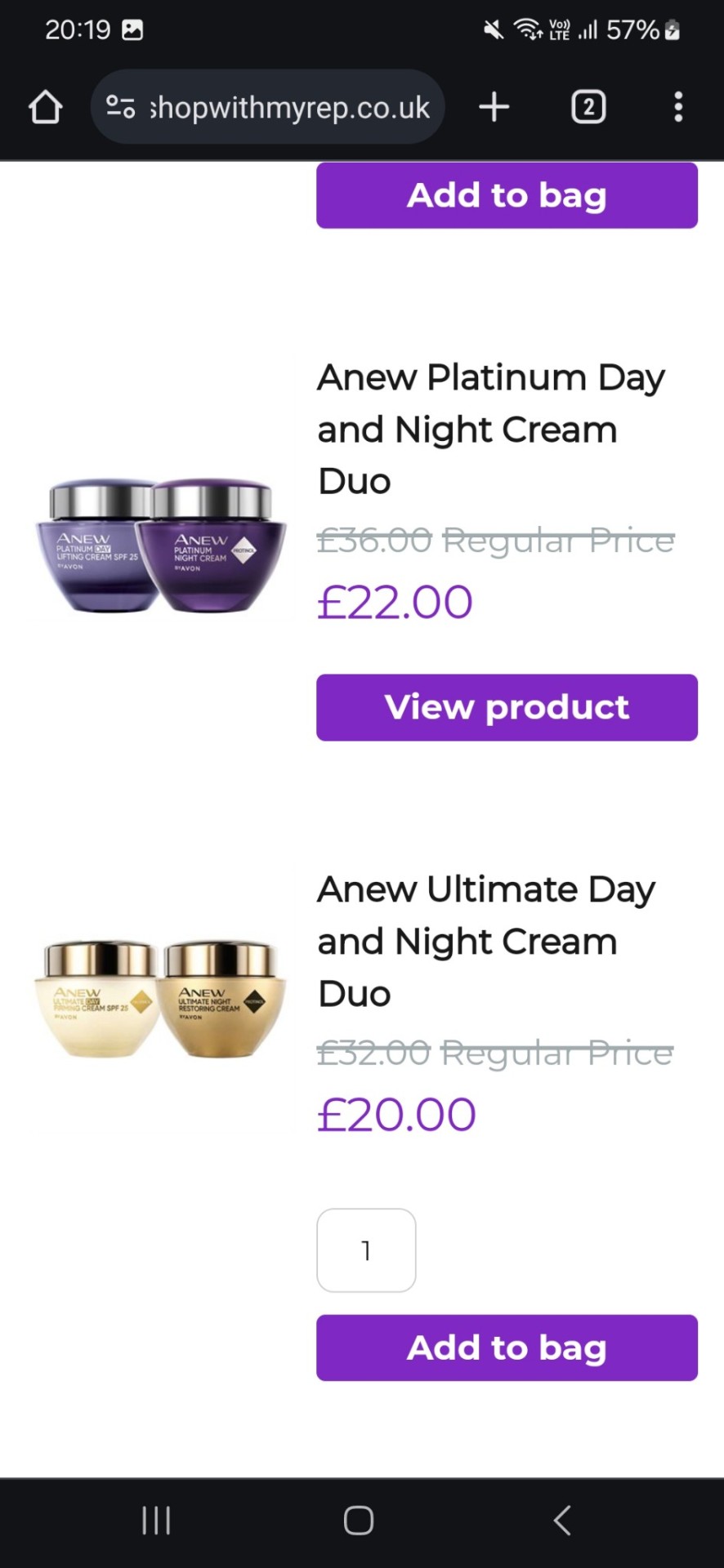
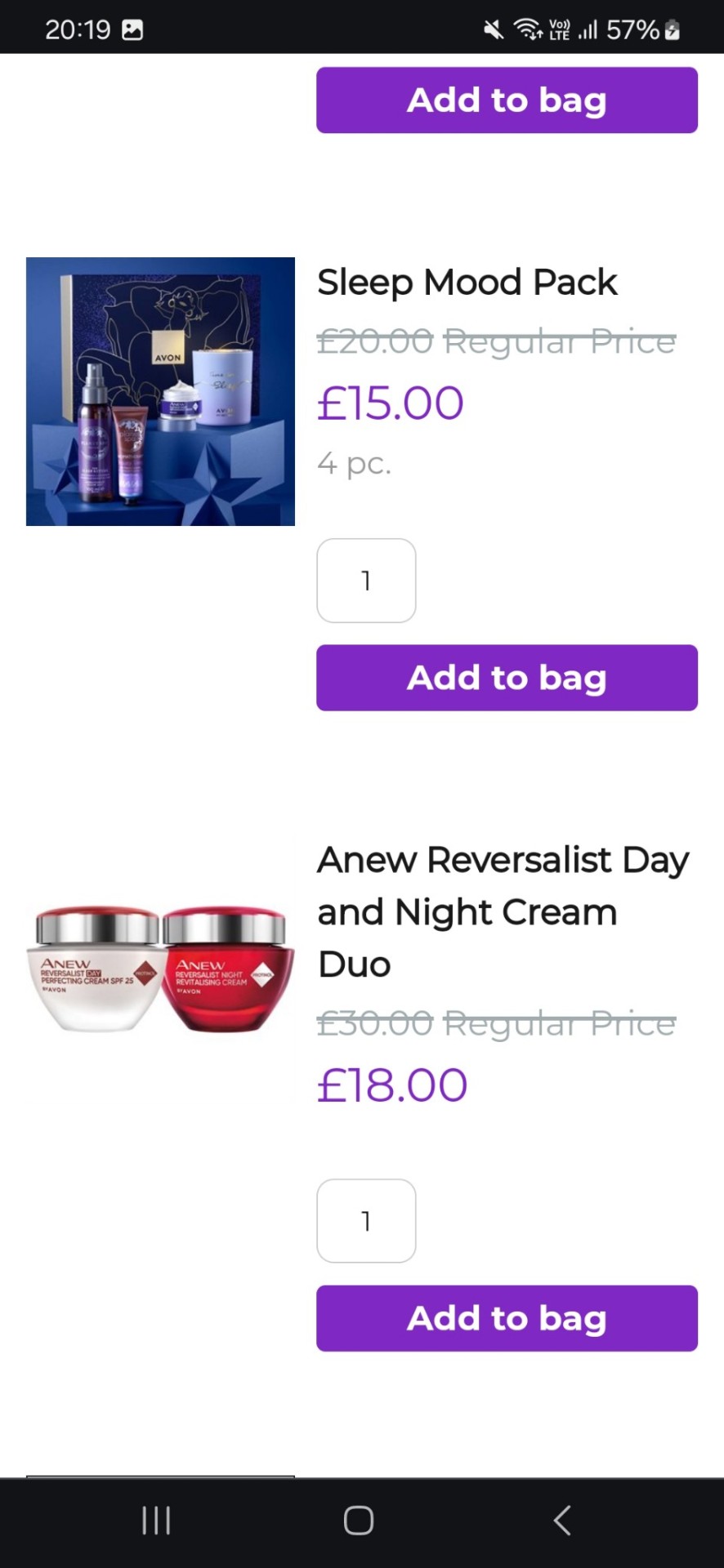
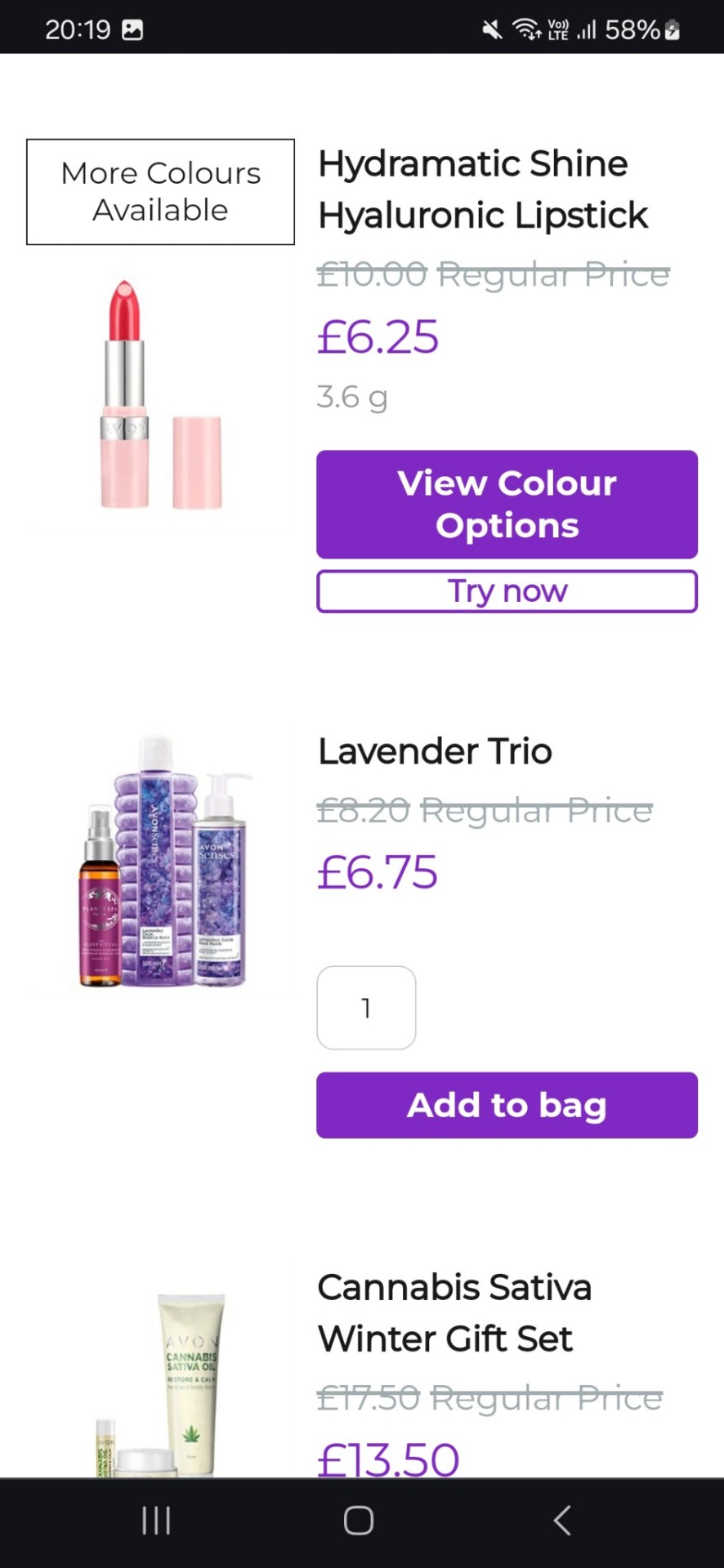
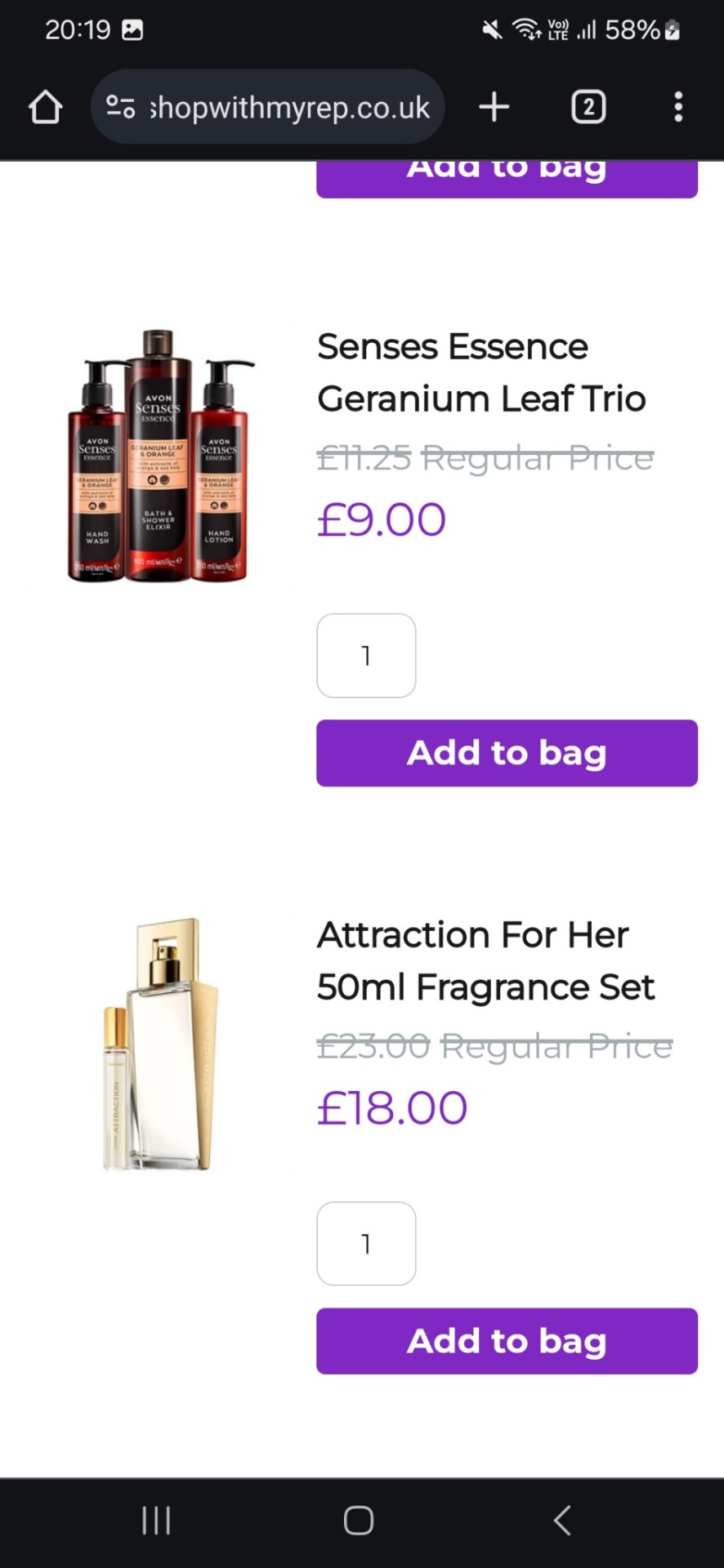
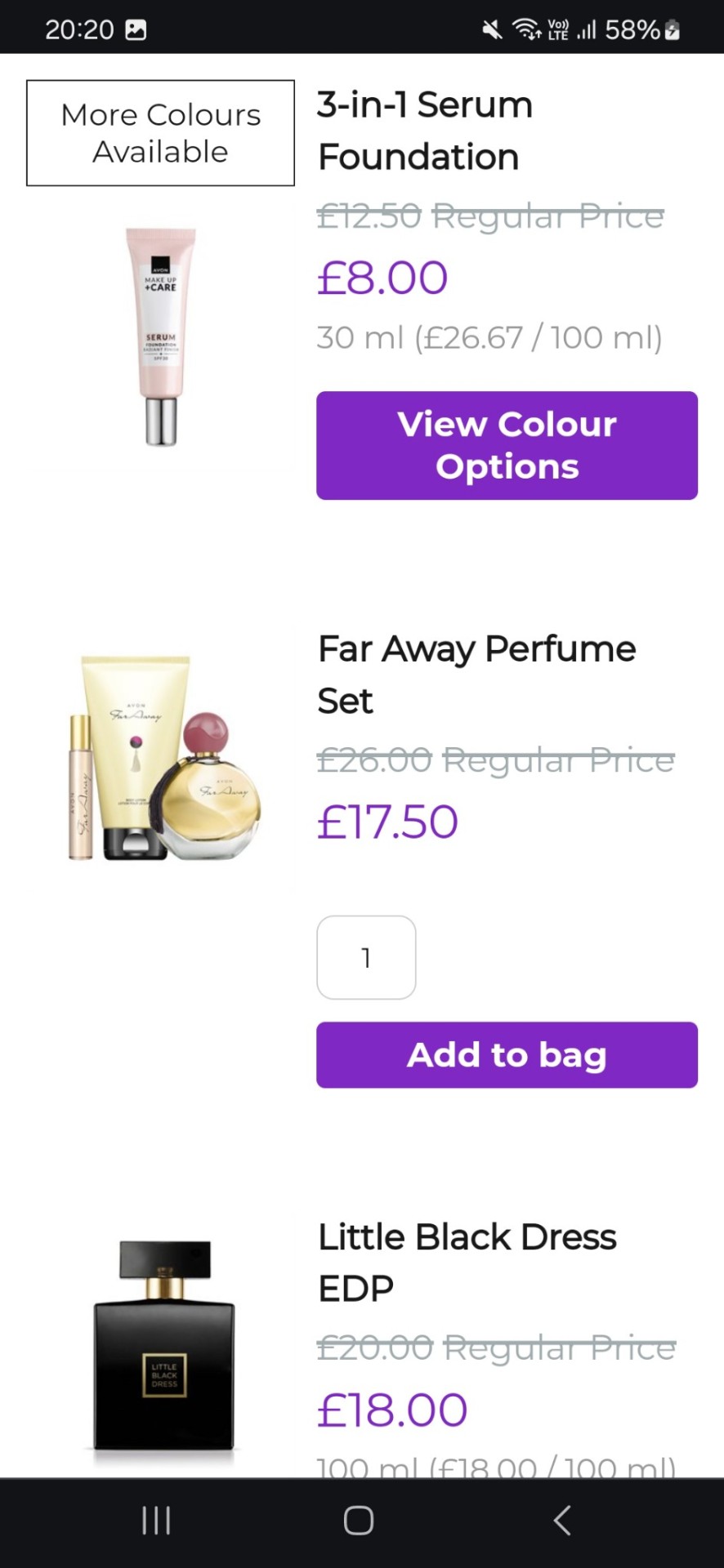
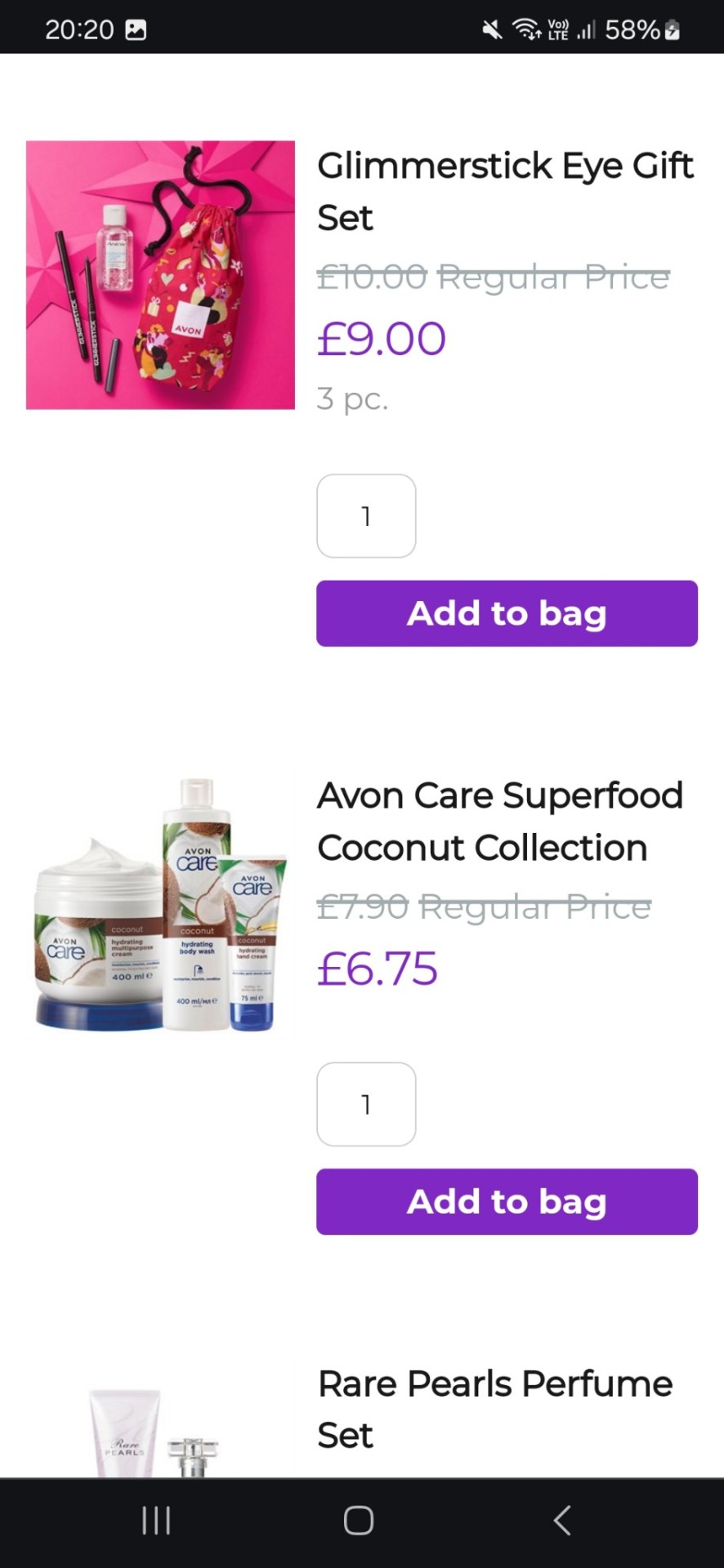
2 notes
·
View notes
Text
Difference B/W Social Media Manager and a Marketing Manager
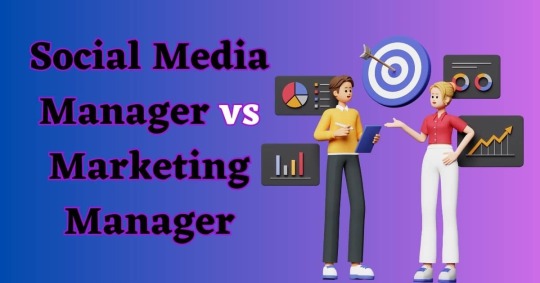
In today's digital age, social media and marketing play a vital role in building a successful business. As a business owner, you may have heard the terms 'social media manager' and 'marketing manager' thrown around, but do you know the difference between the two roles? While both positions are essential to the success of any business, they have distinct differences in terms of their responsibilities and skill sets. Understanding these differences is crucial in determining which position you need to hire to achieve your business goals. In this article, we will be delving into the key differences between a social media manager and a marketing manager, so you can make an informed decision on which one is best suited for your business needs. What is a social media manager? A social media manager is responsible for creating and implementing a brand's social media strategy. They are in charge of managing a company's social media accounts, creating content, and engaging with their audience. A social media manager's job is to increase brand awareness and drive engagement through social media platforms such as Facebook, Twitter, Instagram, and LinkedIn. They also monitor and analyze social media metrics to track the success of their campaigns and make adjustments as needed. A social media manager's primary responsibility is to build and maintain a brand's online presence. They create content that resonates with their target audience, create social media calendars, and develop social media campaigns. They work with graphic designers and content creators to develop engaging content that will attract and retain followers. A social media manager must also be up-to-date with the latest social media trends and algorithms to ensure that their strategies are effective. What is a marketing manager? A marketing manager is responsible for developing and implementing a company's overall marketing strategy. They oversee the marketing department and manage a team of marketing professionals. A marketing manager's job is to identify target markets, develop marketing campaigns, and analyze market trends to determine the best ways to reach their audience. They work closely with other departments, such as sales and product development, to ensure that their marketing efforts align with the company's overall goals. A marketing manager's primary responsibility is to develop a comprehensive marketing plan that includes advertising, promotions, and public relations. They conduct market research to identify opportunities and develop strategies that will help the company reach its target audience. They work with creative teams to develop marketing materials, such as brochures, websites, and advertisements. A marketing manager must also be up-to-date with the latest marketing trends and techniques to ensure that their strategies are effective. The Difference Between A Social Media Manager and a Marketing Manager While both positions are in charge of promoting a brand, they have different responsibilities and skill sets. A social media manager is responsible for managing a brand's social media accounts and creating content that resonates with its target audience. They work closely with graphic designers and content creators to develop engaging content that will attract and retain followers. On the other hand, a marketing manager is responsible for developing a company's overall marketing strategy, which includes advertising, promotions, and public relations. They work with creative teams to develop marketing materials that will help the company reach its target audience. Another difference between the two positions is their level of expertise. Social media managers are experts in social media platforms and algorithms, while marketing managers are experts in overall marketing strategies. Social media managers are responsible for creating content that resonates with their target audience on social media platforms, while marketing managers are responsible for developing marketing campaigns that will reach their target audience across multiple platforms. When to Hire a social media manager A social media manager is an essential hire for businesses that want to build and maintain a strong online presence. If your business relies heavily on social media platforms to reach your target audience, then hiring a social media manager is a must. Social media managers are experts in creating content that resonates with their target audience on social media platforms. They can also track social media metrics to determine the success of their campaigns and make adjustments as needed. If your business is just starting and you have a limited budget, then hiring a social media manager may be a better choice than hiring a marketing manager. Social media managers are generally less expensive than marketing managers and can help you establish a strong online presence without breaking the bank. When to hire a marketing manager A marketing manager is an essential hire for businesses that want to develop a comprehensive marketing strategy. If your business is looking to expand into new markets, develop new products, or launch new promotions, then hiring a marketing manager is a must. Marketing managers can conduct market research to identify opportunities and develop strategies that will help the company reach its target audience. If your business is more established and has a larger budget, then hiring a marketing manager may be a better choice than hiring a social media manager. Marketing managers are generally more expensive than social media managers, but they have a broader range of expertise and can help you develop a comprehensive marketing plan that will help you achieve your business goals. Pros and cons of hiring a social media manager Pros - Social media managers are experts in social media platforms and algorithms, which means they can create content that resonates with your target audience. - They can track social media metrics to determine the success of their campaigns and make adjustments as needed. - They are generally less expensive than marketing managers, which makes them a good choice for businesses with a limited budget. Cons - Social media managers are not experts in overall marketing strategies, which means they may not be able to help you develop a comprehensive marketing plan. - They are focused solely on social media platforms, which means they may not be able to help you reach your target audience across multiple platforms. Pros and cons of hiring a marketing manager Pros - Marketing managers are experts in overall marketing strategies, which means they can help you develop a comprehensive marketing plan that will help you achieve your business goals. - They can conduct market research to identify opportunities and develop strategies that will help the company reach its target audience. - They have a broader range of expertise than social media managers, which means they can help you reach your target audience across multiple platforms. Cons - Marketing managers are generally more expensive than social media managers, which may be a concern for businesses with a limited budget. - They may not be experts in social media platforms and algorithms, which means they may not be able to create content that resonates with your target audience on social media platforms. How to choose between a social media manager and a marketing manager Choosing between a social media manager and a marketing manager depends on your business needs and budget. If your business relies heavily on social media platforms to reach your target audience, then hiring a social media manager is a must. If your business is looking to develop a comprehensive marketing plan, then hiring a marketing manager is a must. If you have a limited budget, then hiring a social media manager may be a better choice than hiring a marketing manager. Social media managers are generally less expensive than marketing managers and can help you establish a strong online presence without breaking the bank. However, if your business has a larger budget, then hiring a marketing manager may be a better choice than hiring a social media manager. Marketing managers have a broader range of expertise and can help you develop a comprehensive marketing plan that will help you achieve your business goals. Conclusion In conclusion, social media managers and marketing managers play crucial roles in building a successful business. While both positions are essential to the success of any business, they have distinct differences in terms of their responsibilities and skill sets. Understanding these differences is crucial in determining which position you need to hire to achieve your business goals. If your business relies heavily on social media platforms to reach your target audience, then hiring a social media manager is a must. If your business is looking to develop a comprehensive marketing plan, then hiring a marketing manager is a must. Remember to choose the position that aligns best with your business needs and budget. Read the full article
2 notes
·
View notes
Text
Top Services Offered by a Digital Marketing Company in Ahmedabad
In today’s fast-paced digital world, businesses need a strong online presence to stay ahead of the competition. A reliable digital marketing company in Ahmedabad, like Himta Technologies, plays a crucial role in helping brands establish their identity, increase visibility, and drive sales. As the Best Digital Marketing Agency in Ahmedabad, we offer a comprehensive range of services to cater to all your digital marketing needs. Here’s a detailed look at the top services we provide:
1. Social Media Marketing (SMM)
Social media is a powerful tool for brand awareness and customer engagement. Our social media marketing services help businesses connect with their target audience on platforms like Facebook, Instagram, LinkedIn, and Twitter. As the Best Social Media Marketing Agency in Ahmedabad, we create engaging content, run targeted ads, and manage campaigns to enhance your online presence and drive conversions.
2. Search Engine Optimization (SEO)
Achieving a higher ranking on search engines is essential for attracting organic traffic. Our SEO services focus on:
Keyword research and optimization
On-page and off-page SEO
Technical SEO improvements
Link building
Local SEO for better visibility in Ahmedabad and surrounding areas
As the Best SEO service provider in Ahmedabad, we ensure that your website ranks higher and gains more visibility in search results.
3. Website Development & Design
Your website is the face of your business. A well-designed, fast, and user-friendly website is essential for success. Our website development and design services include:
Custom website design
Mobile-responsive development
E-commerce website development
CMS-based websites
If you’re looking for a website developer in Ahmedabad, we create visually appealing, SEO-friendly websites that provide a seamless experience to users.
4. Software Development
Every business has unique requirements, and custom software solutions can help streamline operations. At Himta Technologies, we develop scalable and efficient software tailored to your business needs. Our services include:
Custom software development
Enterprise solutions
CRM & ERP software development
Mobile app development
As a leading Software developer in Ahmedabad, we ensure that your business operates smoothly with the latest technology-driven solutions.
5. Branding Services
Branding is more than just a logo; it’s about creating a strong and lasting impression. Our branding services include:
Logo design
Packaging design
Business card and brochure design
Flyer and newsletter design
Brand strategy development
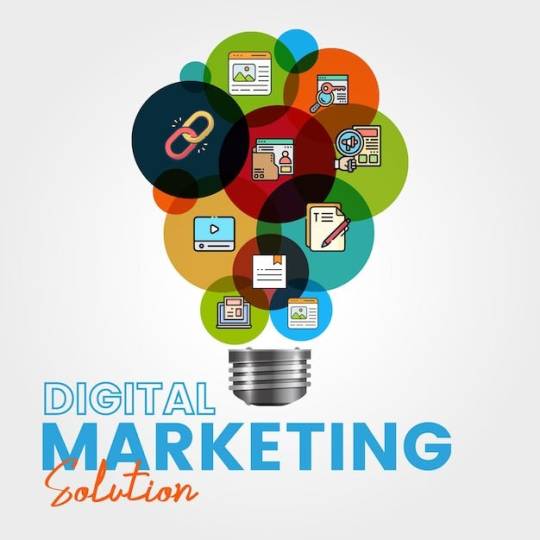
6. Pay-Per-Click (PPC) Advertising
Want immediate results? Our PPC advertising services help businesses generate high-quality leads through Google Ads, Facebook Ads, and other paid campaigns. We focus on:
Keyword bidding strategy
Ad copy creation
Campaign optimization
Performance tracking and reporting
Our targeted PPC campaigns ensure a higher return on investment (ROI) for your business.
7. Content Marketing
Quality content plays a crucial role in digital marketing. Our content marketing services include:
Blog writing
Website content creation
Social media content
Video content marketing
We create engaging, SEO-optimized content that educates and converts your audience.
Why Choose Himta Technologies?
At Himta Technologies, we are committed to delivering result-driven digital marketing solutions tailored to your business needs. Our experienced team, innovative strategies, and customer-centric approach set us apart from the competition.
Contact Us Today!
Looking for the Best Digital Marketing Agency in Ahmedabad Himta Technologies is here to help you grow your business online. Get in touch with us today: 📞 Phone: +91 90999 33443 📧 Email: [email protected] 🌐 Website:
Let’s take your business to the next level with our top-notch digital marketing services!
#himtatech#himtatechnologies#branding agency in ahmedabad#best seo agency in ahmedabad#social media marketing company in ahmedabad#best digital marketing agency in ahmedabad#best seo service provider in ahmedabad#creative branding agency in ahmedabad
0 notes
Text
Dexcel Digital Hub is a digital marketing services in pune
Why Your Business Needs a Digital Marketing Partner in Pune
In today’s competitive market, having a strong digital presence is no longer optional—it’s a necessity. Whether you're a startup, a small business, or an established brand, digital marketing plays a crucial role in your growth and success. If you're looking for expert digital marketing services in Pune, Dexcel Digital Hub is here to help you navigate the digital landscape with result-driven strategies.
Why Digital Marketing is Essential for Your Business
Gone are the days when businesses could rely solely on traditional marketing methods. With more than 700 million internet users in India, digital marketing offers:
✔️ Increased Visibility – Reach a wider audience across search engines and social media. ✔️ Targeted Advertising – Connect with potential customers based on demographics, interests, and behavior. ✔️ Cost-Effectiveness – More affordable than traditional marketing with better ROI. ✔️ Measurable Results – Track and optimize campaigns in real-time for better performance.
How Dexcel Digital Hub Can Help You Grow Online
As a leading digital marketing agency in Pune, Dexcel Digital Hub specializes in customized strategies that drive traffic, generate leads, and increase conversions.
Our Digital Marketing Services
🔹 Search Engine Optimization (SEO)
Improve your Google rankings and increase organic traffic with advanced SEO techniques. From keyword research to technical SEO, we ensure your website gets noticed.
🔹 Social Media Marketing (SMM)
Engage your audience and build brand loyalty on platforms like Instagram, Facebook, LinkedIn, and Twitter. We create compelling content and manage campaigns for maximum impact.
🔹 Pay-Per-Click (PPC) Advertising
Get instant results with Google Ads, Facebook Ads, and Instagram Ads. Our PPC experts craft data-driven campaigns to maximize ROI.
🔹 Content Marketing
From blogs and website content to infographics and videos, we create high-quality content that resonates with your audience and boosts engagement.
🔹 Website Design & Development
Your website is your online identity. We design and develop fast, mobile-friendly, and SEO-optimized websites that attract and convert visitors.
🔹 Branding & Graphic Design
A strong brand identity is key to success. We design creative logos, business cards, brochures, and marketing materials that leave a lasting impression.
🔹 Email & WhatsApp Marketing
Stay connected with your customers through personalized email and WhatsApp campaigns designed to increase engagement and sales.
Read More at:
0 notes
Text
Campaign 8 Avon Brochure Online
Campaign 8 Avon Brochure Online Avon C/8-2023 Sale Dates Campaign Catalogs, Sales & Specials for Campaign 8-2023 are effective April 12, 2021 to April 25, 2023 – view/shop the current campaign here: Avon Campaign Brochure For anyone that doesn’t know what a “campaign” is in the world of Avon… a campaign is a 2 week period of time that a brochure, sales and specials are good for. That’s…

View On WordPress
#Avon belif sale#Avon brochure online#Avon c8 April brochure#Avon c8 brochure 2023#Avon campaign 8 brochure
0 notes
Text
How do you make your small business visible?

Visibility is the lifeblood of any small business. Without it, potential customers won't know you exist, let alone consider your products or services. In today's competitive market, making your small business visible requires a multi-pronged approach, blending both online and offline strategies. Here's a comprehensive guide:
I. Online Visibility Strategies:
1. Build a Professional Website: Your website is your digital storefront. It should be user-friendly, mobile-responsive, and optimized for search engines (SEO). Clearly showcase your products or services, include customer testimonials, and make it easy for visitors to contact you.
2. Master Search Engine Optimization (SEO): SEO is crucial for driving organic traffic to your website. Research relevant keywords that your target audience is searching for and incorporate them into your website content, meta descriptions, and title tags. Build high-quality backlinks from reputable websites.
3. Leverage Social Media Marketing: Choose the social media platforms where your target audience is most active and create engaging content that resonates with them. Be consistent with your posting schedule and interact with your followers. Consider running targeted social media ads to reach a wider audience.
4. Embrace Local SEO: If you have a physical location, optimize your Google My Business profile. Ensure your business information is accurate and up-to-date. Encourage customers to leave reviews on your Google My Business profile and other relevant platforms.
5. Content Marketing is King: Create valuable and informative content that addresses your target audience's needs and interests. This could include blog posts, articles, videos, infographics, or podcasts. Sharing valuable content establishes you as an expert in your field and attracts potential customers to your website.
6. Email Marketing: Nurture Your Leads: Build an email list and send regular newsletters, promotions, and updates to your subscribers. Email marketing is a highly effective way to nurture leads and build relationships with your customers.
7. Online Advertising (PPC): Consider running pay-per-click (PPC) advertising campaigns on search engines and social media platforms. PPC advertising allows you to target specific demographics and interests, ensuring your ads are seen by the right people.
8. Online Directories and Listings: List your business on relevant online directories, such as Yelp, TripAdvisor, and industry-specific directories. This increases your online visibility and makes it easier for potential customers to find you.
9. Influencer Marketing: Partner with relevant influencers in your niche to reach a wider audience. Influencers can promote your products or services to their followers, increasing brand awareness and driving sales.
10. Reviews and Testimonials: Encourage satisfied customers to leave reviews and testimonials on your website and other online platforms. Positive reviews build trust and credibility, influencing potential customers to choose your business.
II. Offline Visibility Strategies:
1. Networking and Community Involvement: Attend local networking events, join industry associations, and participate in community activities. Building relationships with other business owners and community members can lead to valuable referrals and partnerships.
2. Business Cards and Marketing Materials: Carry business cards with you at all times and distribute them to potential customers and partners. Create high-quality marketing materials, such as brochures, flyers, and postcards, to promote your business.
3. Local Partnerships: Collaborate with other local businesses to cross-promote each other's products or services. This could involve joint marketing campaigns, referral programs, or co-hosting events.
4. Sponsorships and Events: Sponsor local events or participate in community festivals. This increases your brand visibility and shows your support for the local community.
5. Public Relations and Media Outreach: Reach out to local media outlets, such as newspapers, radio stations, and TV channels, to share your business story or announce new products or services. Getting media coverage can significantly boost your visibility.
6. Signage and Storefront: If you have a physical storefront, ensure your signage is visible and attractive. Make sure your storefront is clean and inviting to attract customers.
7. Word-of-Mouth Marketing: Encourage satisfied customers to spread the word about your business to their friends and family. Word-of-mouth marketing is a powerful tool for building trust and attracting new customers.
8. Direct Mail Marketing: Consider using direct mail marketing to reach potential customers in your local area. This could involve sending postcards, flyers, or catalogs.
9. Customer Loyalty Programs: Implement a customer loyalty program to reward repeat customers and encourage them to refer new customers.
10. Attend Trade Shows and Conferences: Participating in trade shows and conferences is a great way to network with other industry professionals and showcase your products or services to potential customers.
III. Integrating Online and Offline Strategies:
The most effective visibility strategies combine both online and offline approaches. For example, you can promote your website and social media channels on your business cards and marketing materials. You can also use social media to announce local events and promotions.
Key Considerations:
Target Audience: Focus your efforts on reaching your target audience. Don't try to be everything to everyone.
Budget: Develop a marketing budget and allocate your resources wisely.
Consistency: Be consistent with your marketing efforts. Regularly posting on social media, sending email newsletters, and networking with other businesses are essential for building visibility.
Measurement: Track your results and measure the effectiveness of your marketing campaigns. This will help you identify what's working and what's not, allowing you to optimize your strategy.
Making your small business visible takes time, effort, and a strategic approach. By implementing these strategies and staying consistent with your marketing efforts, you can increase your brand awareness, attract new customers, and grow your business.
0 notes
Text
Best Complete Advertising Solutions Company
In the present competitive business environment, a well-devised advertising strategy is vital to building brand awareness, drawing customers, and making sales. Whether you have a startup, small business, or large enterprise, you must get a comprehensive advertising partner who is aware of your specific needs and delivers end-to-end marketing solutions for you.
At Qicon, we focus on creating an all-in-one advertising platform for our clients through digital, traditional, and performance-based strategies to get the best results for the brand's concepts and effectiveness. We provide a one-stop solution for all your marketing needs, from SEO and social media advertising to TV, radio, print, and outdoor campaigns.
Our Comprehensive Advertising Services
1. Digital Marketing & Online Advertising
It is vitally important for the modern digital era, online presence is a must. Our evidence-based digital marketing solutions guarantee your brand will be visible to people at the right time.
✔ Search Engine Optimization (SEO) – Elevate your search rankings and get more organic traffic.
✔ Pay-Per-Click (PPC) Advertising – Get instant leads with Google Ads & Bing Ads.
✔ Social Media Advertising – The ads are placed with a precise target audience on Facebook, Instagram, LinkedIn, and Twitter.
✔ Content Marketing & Blogging – Conveying the valuable information that will attract and convert.
✔ Email Marketing and lead Nurturing—Personalized email campaigns can help Create a much larger audience that can be engaged.
2. Branding & Creative Services
A strong brand identity is something that has a lasting impact. We work with our clients to develop branding ideas that are memorably different.
✔ Logo & Brand Identity Design
– Your logos and elements of an attractive brand that professionals design.
✔ Website Development & UI/UX Design
– Web portals that efficiently make online conversions.
✔ Corporate Presentations & Brochures
– Persuasive Advertising materials.
✔ Product Packaging & Label Design
– The pleasant and in-effectiveness packaging of the product that can increase the sales volume.
3. Traditional Advertising Solutions
The traditional offline advertising method is not obsolete. Quite the contrary—it has been and still is working very well for brands. We offer a wide range of traditional advertising solutions to amplify your reach.
✔ Television & Radio Ads
– Make advertisements on television and radio that are perfect for mass audiences.
✔ Newspaper & Magazine Ads
– You may choose from various options, including the print ads, to appear in the main publications.
✔ Billboards & Outdoor Advertising
– Billboards, banners, and transit ads for the most public exposure possible.
✔ Event & Trade Show Marketing
– Do festival promotions, exhibitions, expos, and corporate events as your marketing strategy.
4. Performance-Driven Advertising & ROI Optimization
Reducing advertising costs is one way to get the most out of your advertising. To achieve this level, our focus is on the performance of our services and the guarantee of delivering ROI.
✔ Conversion Rate Optimization (CRO)
– Enhance sales and conversions on your website.
✔ Affiliate & Influencer Marketing
– Collaborate with popular influencers to ensure the credibility of the brand.
✔ Online Reputation Management (ORM)
– Create and manage a positive brand image.
✔ Data Analytics & Performance Tracking
– Be closer to continuous campaign improvements by having deep insights.
Why Choose Qicon as Your Advertising Partner?
✔ Comprehensive Advertising Approach
– We provide comprehensive digital, traditional, and performance marketing services.
✔ Customized Strategies
– We will offer tailored advertising solutions for different industries and markets.
✔ Creative & Data-Driven
– Creativity teams will join analytics teams to raise the demand for the product or service
✔ End-to-End Solutions
– We can bring ideas to life with branding & content creation and realize them with execution & optimization.
✔ Proven Success
– We have become leaders in advertising as a team of innovative advertisers.
Boost Your Brand with Qicon!
At Qicon, we are committed to securing businesses with effective advertising and marketing methods that will result in their growth. Whether for marketing SEO, PPC, social media marketing, branding, or offline advertising, we are a competent authority to take your brand to the next level. 📞 Contact us today, and let's prepare a winning advertising strategy for your business! 🚀
0 notes
Text
How Furniture 3D Visualization Helps in Increasing Revenue in Business

3D Furniture Visualization Helps in Increasing Revenue
The furniture industry has evolved significantly with digital transformation, and one of the most impactful innovations is 3D furniture visualization. With the rise of 3D product rendering services, businesses can showcase their furniture collections more effectively, attract more customers, and ultimately increase revenue.
Gone are the days when traditional catalog photography was the only way to market furniture. 3D furniture design and 3D product visualization have revolutionized the industry, offering businesses cost-effective, interactive, and highly engaging solutions. But how exactly does furniture 3D visualization contribute to revenue growth? Let's explore.
1. Enhancing Customer Engagement with Realistic Visuals
Customers are more likely to purchase furniture when they can visualize it in a realistic setting. 3D product rendering services provide high-quality, photorealistic images that help customers see every detail of a product before making a decision.
2. Offering Customization with 3D Furniture Models
Modern consumers prefer personalized experiences. With 3D furniture models, businesses can offer:
Custom color and material options
Different styles and configurations
Real-time modifications based on customer preferences
This level of customization increases customer satisfaction and boosts conversion rates.
3. Reducing Production and Marketing Costs
Traditional photography requires expensive setups, professional lighting, and multiple prototypes. With 3D product visualization, businesses can create lifelike images without physical production, reducing costs significantly.
4. Speeding Up Product Development
Furniture manufacturers and retailers can test multiple designs using 3D furniture design before committing to mass production. This accelerates product development, saving both time and money.
5. Enhancing Online Shopping Experience
E-commerce stores benefit immensely from 3D product rendering services. Customers can rotate, zoom, and explore 3D furniture models from different angles, creating a more immersive shopping experience.
6. Minimizing Product Returns
A major challenge in the furniture industry is high return rates due to unmet expectations. 3D product visualization allows customers to make informed decisions, reducing the chances of dissatisfaction and returns.
7. Enabling Augmented Reality (AR) Integration
With 3D product visualization, businesses can integrate Augmented Reality (AR) to let customers place virtual furniture in their space. This interactive feature builds confidence in purchases and increases sales.
8. Creating Eye-Catching Marketing Campaigns
Furniture brands using 3D furniture design for advertisements create more engaging and visually appealing content. High-quality 3D renders make online and offline marketing campaigns stand out.
9. Expanding Sales to a Global Market
With 3D product rendering services, businesses can showcase furniture designs globally without shipping physical samples, enabling them to reach international customers easily.
10. Strengthening B2B Partnerships
Wholesalers and distributors prefer working with manufacturers who provide detailed 3D furniture models, as it simplifies decision-making and enhances collaboration.
11. Showcasing Furniture in Multiple Environments
With 3D product visualization, businesses can display furniture in various settings—offices, homes, hotels—helping customers visualize how the piece will fit into their specific space.
12. Increasing Social Media Engagement
Visually appealing 3D renders receive more likes, shares, and comments on social media, boosting brand visibility and attracting potential buyers.
13. Providing Interactive 3D Catalogs
Instead of static brochures, businesses can offer interactive 3D catalogs, allowing customers to explore designs digitally before making a purchase.
14. Enhancing Trade Show and Exhibition Displays
At furniture expos and trade shows, companies using 3D furniture design can display their entire collection virtually, reducing logistics costs while still impressing attendees.
15. Future-Proofing the Business with 3D Technology
As the industry moves towards digital transformation, companies leveraging 3D product rendering services will stay ahead of competitors and ensure long-term growth.
Conclusion
Furniture 3D visualization is a game-changer for the industry, driving higher customer engagement, reducing costs, enhancing online experiences, and ultimately increasing revenue. Whether through 3D product rendering services, 3D furniture design, or interactive 3D furniture models, businesses can offer more compelling and personalized shopping experiences.
By adopting 3D product visualization, furniture brands can attract more customers, reduce returns, and sell products more efficiently, making it a must-have tool for modern furniture businesses.
FAQs
1. How does 3D product rendering help in furniture marketing? 3D product rendering services create high-quality, realistic images that enhance marketing campaigns and attract more customers.
2. Can 3D furniture design reduce product development costs? Yes! 3D furniture design allows businesses to test different designs before manufacturing, saving time and money.
3. How does 3D product visualization impact e-commerce sales? It provides interactive and detailed views of furniture, increasing customer confidence and conversion rates.
4. What are the benefits of 3D furniture models in customization? Customers can visualize different colors, materials, and styles in real-time, making their shopping experience more personalized.
5. Is 3D product visualization only for large businesses? No! Small and medium-sized businesses can also benefit from affordable 3D product rendering services, improving their sales and marketing strategies.
Read more.......
3D Furniture Modeling Enhances & Customization for Interior Designers
The Art and Science of Creating Photorealistic Architectural 3D Models
Why You Need Professional 3D Product Modeling Services for Your Brand Furniture 3D Visualization
How 3D Furniture Design Is Shaping the Future of Interior Decor 3D Furniture Design
How Can Furniture 3D Visualization Enhance Online Shopping?
Top 5 Trends Shaping the Future of Architectural 3D Visualization
How Architectural 3D Visualizations Improves Client Presentations? Architectural 3D Visualizations Enhance Client Presentations Presenting...
How Can 3D Rendering Help in Designing of 3D Furniture Visualization?
What are the Key Software and Tools Used in Architectural 3D Visualization?
What is Furniture 3D Visualization And how It Helps In Transforming Interior Design?
How the Future of Architectural 3D Visualization Transforms Design and Construction?
How 3D Product Rendering Services Are Changing the Industry?
What is the Power of Architectural Rendering Services in Modern Design?
Streamlining Manufacturing: How 3D Furniture Design Accelerates Prototyping
Architectural Rendering Companies as Sustainability Advocates A Green Approach to Visualization
How 3D Visualization of Architecture Transforming Contemporary Design
Beyond the Catalog Using 3D Product Visualization for Interactive Furniture Selection Using 3D Product Visualization for Interactive Furni...
The Competitive Edge How Architectural Rendering Services Boost Project Success
Design Without Limits The Flexibility of 3D Furniture Models for Modular Interiors
How 3D Product Rendering Services Enhance User Experience in Virtual Stores
Bridging the Gap Between Architects and Clients with 3D Architectural Visualization Services
Photorealistic 3D Furniture Models: The Key to Revolutionizing Online Retail
Interactive Experiences The Rise of Real-Time 3D Architectural Visualization Services
The Role of 3D Product Visualization in Reducing Time-to-Market for Furniture
Architectural 3D Modeling The Foundation of Stunning Visualizations
Why 3D Furniture Design Is the Ultimate Solution for Bespoke Home Decor
The Future of Real Estate Marketing the Role of 3D Architectural Visualization Services
From Idea to Icon how 3D Product Rendering Services Redefine Brand Identity
Beyond Blueprints How Architectural Rendering Companies Revolutionize Pre-Construction Planning
The Art and Science of Architectural 3D Modeling
Interactive Architecture Visualization: Engaging Clients with Real-Time 3D Models
The Importance of Lighting in 3D Furniture Rendering
Augmented Reality and 3D Furniture Visualization: The Perfect Match
Furniture Prototyping Made Easy with 3D Visualization
The Benefits of Furniture 3D Rendering for Custom Designs
The Benefits of Outsourcing to Architectural Rendering Companies
How 3D Product Visualization Brings Ideas to Life From Concept to Reality
How Can 3D Rendering Help in Designing of 3D Furniture Visualization?
0 notes
Text
Best Advertising Company in Ranchi: Cloud SEO.
In the hectic digital world, businesses require highly effective advertising schemes to be relevant and attract audiences. If one is looking to find the best advertising company in Ranchi for innovative, effective advertising services that yield results, then Cloud SEO is the correct answer. They have expertise in digital marketing, social media advertisements, search engine marketing, branding, and every other area from which your business can benefit greatly in terms of visibility and reach. Why Advertising is Important to Your Business? Advertising is very important in developing brand awareness, generating traffic, and increasing sales. Here are the reasons why investing in professional advertising services is crucial: Develops Brand Awareness: Proper advertisement will ensure your brand reaches the target audience and remains at the forefront of the target audience's mind. Boosts Customer Interaction: Strategic advertisement campaigns enhance the interaction with prospective and existing customers. Generates More Sales & Conversions: Most marketing strategies will yield more leads and revenue generation. Differentiates from Competitors: Distinct and effective advertising ideas make it different from its competitors. Why Choose Cloud SEO for Advertising in Ranchi? 1. One Stop Solution for Advertising Cloud SEO is an end-to-end advertising company, and its services entail: ✔ Digital Advertising – Google Ads, Facebook Ads, Instagram Ads, LinkedIn Ads, and more. ✔ Search Engine Marketing (SEM) – Paid search campaigns designed to maximize ROI. ✔ SMM: Connect your audience using highly targeted social media ad campaigns ✔ Branding & Creative Ads: Creation of logos, banners, posters, and all kinds of marketing materials ✔ Content Marketing & Influencer Advertising: Engaging and influencing by high-quality, attention-grabbing content & through influencers. ✔ Outdoor & Print Advertising: Hoardings, pamphlets, brochures, magazine advertisements, and all other prints. 2. Team of experts and data-driven approach Our team of advertising experts and digital marketers uses data analytics, consumer behavior insights, and the latest tools to craft winning advertising campaigns that deliver real results. 3. Cost-Effective & High ROI We design advertising campaigns that provide the highest return on investment (ROI) while keeping your budget in mind. Our cost-effective strategies ensure your business gets maximum exposure at minimal cost. 4. Customized Advertising Campaigns Each business is unique, and so are its advertising needs. We come up with bespoke advertising plans suited to your industry, target audience, and business objectives. Industries We Cater To Our advertising solutions cater to a wide range of industries, including: E-commerce & Retail Healthcare & Medical Education & Coaching Institutes Real Estate & Construction Restaurants & Hospitality Corporate & Startups Fashion & Lifestyle How to Get Started? Partner with the best advertising agency in Ranchi by just making a call. Follow these simple steps to get started: Contact Us – Call to discuss your advertising goals. Strategy Planning – We analyze your business and develop a customized advertising strategy. Campaign Execution – Our team launches, monitors, and optimizes your campaigns for maximum effectiveness. Performance Analysis & Reporting – We provide detailed reports and insights on campaign performance. Ongoing Optimization – Continuous improvements ensure sustained growth and results. Final Thoughts Effective advertising is the key to growing your brand and reaching a larger audience. With Cloud SEO, the best advertising company in Ranchi, you get expert strategies, creative solutions, and high-impact advertising that drives business success. Whether you need digital advertising, social media marketing, branding, or print media campaigns, we have got you covered.
0 notes
Text
Looking for the Best Graphic Design Company in Ahmedabad?

Businesses need to have a strong visual identity in the fast-paced digital world of today. Creative design and eye-catching images are crucial for drawing clients, regardless of the brand's level of experience. StreetMedia is the ideal option if you're looking for the best graphic design company in Ahmedabad. We help firms stand out in the crowded market with a variety of creative services and a team of skilled designers.
Why Opt for StreetMedia?
At StreetMedia, we are committed to providing creative, personalized, and superior graphic design services. In addition to being aesthetically pleasing, our designs are thoughtfully created to successfully convey the message of your company. We are among Ahmedabad's most reputable graphic design firms because of our experience, meticulous attention to detail, and dedication to quality.
Our Services
To satisfy the demands of companies in a variety of industries, we provide a wide range of graphic design services. Our areas of expertise are as follows:
1. Customized Brand Identity Design
Your company's first impression is shaped by your brand identity. A strong brand identity increases consumer recognition and trust. We offer the following brand identity design services:
Design of Logos
Letterheads, business cards, and envelopes
Guidelines for Corporate Branding Brands
We make sure that every component of your brand identity embodies the mission, values, and objectives of your business.
2. Social Media Graphics & Digital Content
One effective way to interact with your audience is through social media. Professional and eye-catching social media visuals increase consumer interaction and brand recognition. We offer:
Banner & Cover Photos for Social Media Post Designs
Motion graphics and GIFs for advertising creatives and digital campaign visuals
We create eye-catching material that complements your brand and immediately captures attention.
3. Print and Marketing Collateral
Print designs are essential for corporate advertising, and traditional marketing is still successful. We produce eye-catching print products that are memorable, such as:
Flyers and Brochures
Stationery & Business Cards
Banners and Posters
Booklets and Catalogs
Advertisements in Newspapers and Magazines
Our designs successfully communicate your message to your target audience in addition to being aesthetically pleasing.
4. UI/UX Design for Websites and Apps
For websites and mobile applications, user interface (UI) and user experience (UX) design are essential. Smooth navigation and increased user engagement are guaranteed by a well-designed UI/UX. Among our UI/UX offerings are:
UI Design for Websites
UI/UX of Mobile Apps
Prototyping and Wireframing
Web apps and dashboards
Designing Landing Pages
We concentrate on developing digital experiences that are easy to use, intuitive, and aesthetically pleasing in order to support organizations' online expansion.
5. Packaging Design
Product packaging is a crucial component of branding and marketing, serving as more than just a protective covering. A distinctive and attractive package can draw in customers and increase sales. We offer the following packaging design services:
Packaging for Products
Design of the Box and Label
Packaging for Retail
Personalized Bags & Wrappers
Food and Drink Containers
We create packaging solutions that not only look amazing but also capture the essence of your company.
6. Illustrations and Infographics
Infographics and illustrations make difficult material easier to understand and increase the interest of readers. Whether for branding, marketing, or education, we produce:
Personalized Infographic Designs and Illustrations
Mascot and Character Designs
Concept Art for Storyboard Illustrations
With aesthetically pleasing and significant designs, our team of talented artists brings your ideas to life.
Why StreetMedia is the Best Graphic Design Company in Ahmedabad
Experienced Designers: Our team comprises very talented and imaginative designers who are cognizant of design aesthetics and market trends.
Customized Solutions:We customize each design to fit the distinct identity and objectives of your company.
High-Quality Work: Our goal is to produce designs that are impactful, expertly done, and of the highest caliber.
Affordable Pricing: We provide affordable prices without sacrificing quality.
Timely Delivery: We respect our clients' time and make sure that projects are finished on schedule.
Client Satisfaction: Client happiness is our top priority, and we aim to go above and above with our creative work.
Conclusion
StreetMedia is the ideal option if you're trying to find a graphic design firm in Ahmedabad. With creative and superior graphic design services, we assist companies in creating a powerful brand presence. We can help with branding, social media graphics, print materials, packaging, UI/UX design, and illustrations.
Contact us right now, and together, let's create something incredible!
0 notes
Text
Graphic Design Gold Coast: Elevate Your Brand with Stunning Visuals

Are you looking for professional graphic design services on the Gold Coast? Whether you need a new logo, marketing materials, or a complete brand overhaul, investing in high-quality design can help your business stand out in a competitive market.
Why Professional Graphic Design Matters
Graphic design is more than just aesthetics—it’s about communication, branding, and making a lasting impression. A professionally designed logo, website, or marketing collateral can:
Enhance brand recognition
Improve customer engagement
Boost credibility and professionalism
Increase conversions and sales
Services Offered by Gold Coast Graphic Designers
Gold Coast is home to a range of talented graphic designers who offer various services, including:
Logo Design & Branding – Create a unique brand identity that resonates with your audience.
Website Design – Develop visually appealing and user-friendly websites.
Print Design – Business cards, brochures, flyers, and posters for offline marketing.
Social Media Graphics – Engaging visuals for social media campaigns.
Packaging Design – Eye-catching packaging to make your product stand out.
Choosing the Right Graphic Design Agency in Gold Coast
When selecting a graphic design agency on the Gold Coast, consider the following:
Portfolio – Review past projects to assess creativity and quality.
Experience & Expertise – Choose a designer with industry experience and a diverse skill set.
Client Reviews – Check testimonials and reviews to ensure reliability.
Custom Solutions – Look for tailored services that align with your brand’s needs.
Pricing – Compare quotes to find the best value without compromising quality.
How Graphic Design Impacts SEO & Digital Marketing
Effective graphic design plays a crucial role in SEO and digital marketing. Optimized images, compelling visuals, and professional layouts improve user experience, reduce bounce rates, and enhance engagement. Additionally, well-designed social media graphics can increase shares, leading to greater brand visibility.
Get Started with Expert Graphic Designers in Gold Coast
If you’re ready to elevate your brand with top-notch graphic design services in Gold Coast, start by consulting with a professional designer today. Investing in quality visuals will set your business apart and create a lasting impact on your audience.
Looking for the best graphic design services on the Gold Coast? Contact a professional designer today and transform your brand’s visual identity!
#digital printing gold coast#gold coast printers#gold coast printing#printing company gold coast#printing services gold coast#printing shop gold coast#graphic design gold coast#graphic design services gold coast
0 notes
Text
Why High-Quality Food Photography Boosts Your Restaurant’s Sales | Let’s Media Solution
In the bustling restaurant industry, standing out is crucial for attracting and retaining customers. One powerful way to set your restaurant apart is through high-quality food photography. At Let’s Media Solution, we understand how impactful food photography can be. As a restaurant owner or marketer, you may be wondering, “How can food photography influence my sales?” The answer lies in the art of visual storytelling.Let’s dive into why investing in professional food photography in Dubai can elevate your restaurant’s brand and drive sales.
1. The Power of Visual Appeal
Humans are naturally drawn to visually appealing images, especially when it comes to food. High-quality food photography captures the true essence of your dishes — making them look more appetizing, fresh, and delicious. When potential customers scroll through your website, social media, or a food delivery app, a stunning image of your dishes can be the deciding factor in whether they choose your restaurant over another.
2. Increases Customer Engagement
In today’s digital age, first impressions are often made online. Restaurants that use professional food photography on social media platforms like Instagram, Facebook, or even Pinterest, tend to see higher engagement rates. Vibrant, mouth-watering photos prompt customers to like, share, and comment, which increases brand visibility and attracts a larger audience. With the help of expert food photography Dubai services, you can create a visual experience that excites your audience and encourages them to visit your restaurant.
3. Enhances Menu Appeal
A well-photographed menu can boost customer interest and drive sales. When customers can see exactly what they’re ordering, they’re more likely to make a purchase. High-quality food photos help communicate the care and expertise involved in your dish preparation. A beautifully photographed dish on the menu invites customers to indulge, increasing the likelihood that they’ll place an order.
4. Improves Online Listings and Delivery Apps
In an era where food delivery apps dominate, having high-quality photos of your dishes is essential. Platforms like UberEats, Zomato, and Deliveroo allow you to showcase your menu with vibrant imagery. The better the food photography, the more likely customers are to choose your dishes. Food photography services from Let’s Media Solution can make your restaurant stand out even in a crowded online marketplace.
5. Builds Brand Identity and Trust
Consistent, professional food photography creates a cohesive brand image. It conveys the quality and style of your restaurant, whether you specialize in fine dining or casual bites. When customers see high-quality, consistent images of your food, they associate it with reliability and trust. This trust increases the likelihood of repeat visits and word-of-mouth referrals.
6. Supports Effective Marketing Campaigns
High-quality food photography is essential for creating impactful marketing campaigns. Whether it’s for digital ads, brochures, or posters, using professional images helps your restaurant present itself in the best possible light. A well-crafted visual message promotes your dishes as not just food but as an experience. This emotional connection can drive conversions and ultimately boost your restaurant’s sales.
Why Choose Let’s Media Solution for Your Food Photography in Dubai?
At Let’s Media Solution, we understand the importance of creating stunning, mouth-watering food photography that speaks volumes about your restaurant. Serving businesses across Dubai, we specialize in capturing the essence of your dishes with creativity, expertise, and attention to detail.
Why Choose Us?
Expertise in Food Photography: Our photographers know how to make your food look irresistible with the right lighting and angles.
End-to-End Service: From conceptualization to post-production, we handle everything so you can focus on your business.
Tailored Solutions: We work closely with you to understand your brand and deliver images that reflect your restaurant’s identity.
Proven Track Record: Our clients trust us for high-quality images that boost sales and online presence.
Conclusion
High-quality food photography isn’t just about making your dishes look good; it’s about creating an emotional connection with your customers. Whether you’re showcasing your creations on social media, your website, or food delivery platforms, professional food photography can boost your restaurant’s visibility, engagement, and sales. If you’re looking to enhance your restaurant’s visual appeal and boost your sales, contact Let’s Media Solution today! Our expert team in Dubai is ready to bring your dishes to life through professional food photography.
FAQ:
Q: How can food photography help my restaurant’s social media growth? A: Great food photography attracts more likes, shares, and comments on platforms like Instagram, which can significantly increase your restaurant’s online visibility and follower base.
Q: What makes food photography in Dubai special? A: Food photography in Dubai captures the essence of diverse culinary experiences, blending local and international flavors. Professional photographers know how to highlight the vibrant colors, textures, and details that make your food irresistible.
Q: How often should I update the food photos for my restaurant? A: It’s a good idea to refresh your food images seasonally or whenever you update your menu. Keeping your photos up-to-date helps maintain customer interest and reflects the dynamic nature of your offerings.
Q: Can Let’s Media Solution help with food photography? A: Absolutely! Let’s Media Solution offers professional food photography services in Dubai, capturing the essence of your dishes with vibrant, mouth-watering images to elevate your restaurant’s marketing efforts.
Schedule Your Session Now!
0 notes